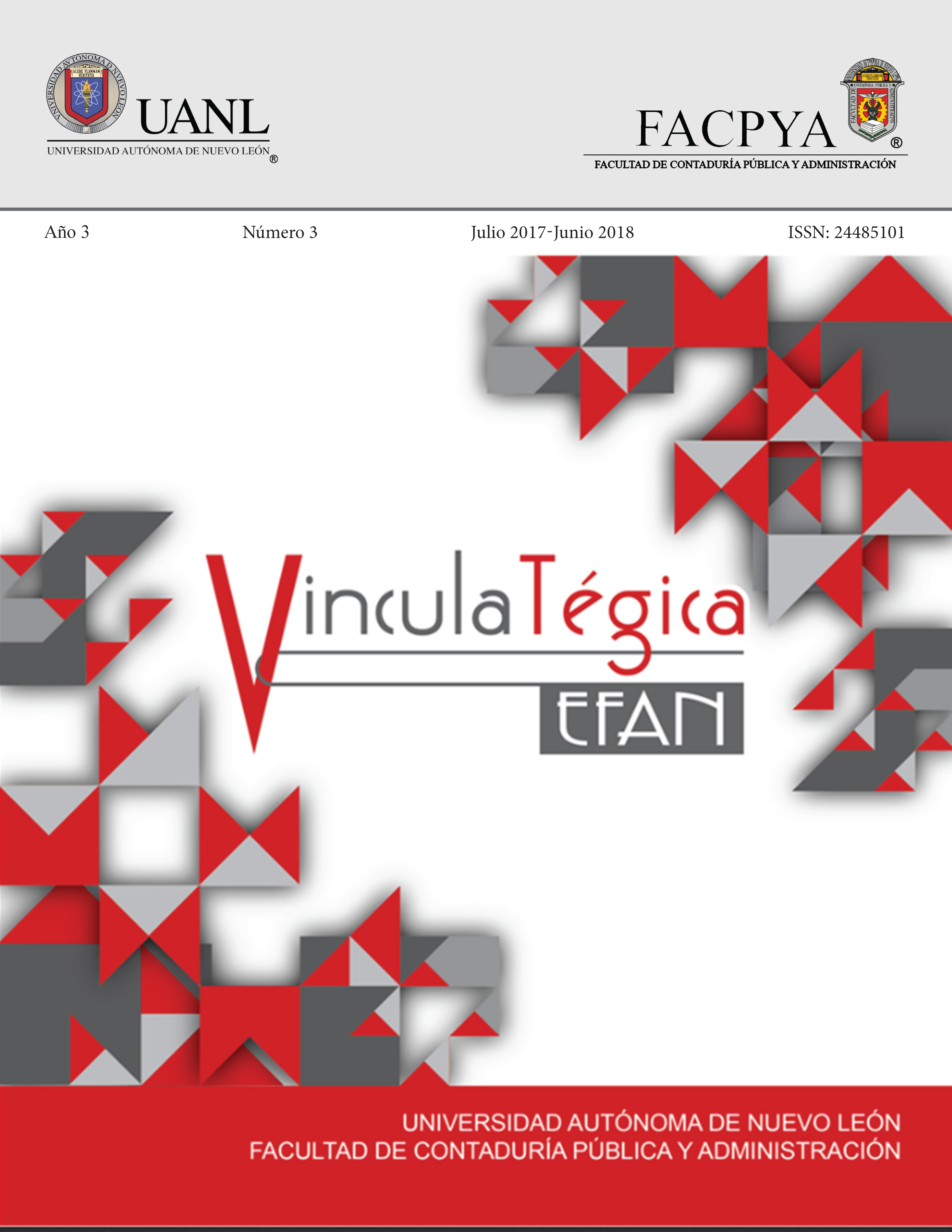La Industria Automotriz en México y El Desarrollo de Proveedores Nacionales
DOI:
https://doi.org/10.29105/vtga3.3-1101Palabras clave:
Industria Automotriz, Cadena de Valor, Desarrollo de Proveedores, MéxicoResumen
La integración de cadenas de valor ha sido un tema fundamental en el desarrollo económico de cualquier economía, sin embargo, la problemática planteada es saber ¿Cómo integrar más proveedores nacionales de materias primas, partes y componentes del sector automotriz para que el beneficio de la producción repercuta en la industria nacional? Parece que hay ciertas dificultades a superar, por lo que el objetivo de esta investigación es analizar, desde una perspectiva teórica, los factores que dificultan seleccionar a los proveedores de materias primas y componentes nacionales por parte de las empresas armadoras de vehículos de la industria automotriz en general. Se realiza un análisis teórico a profundidad para presentar como hipótesis que los factores que afectan a esta industria son: La falta de calidad en los productos nacionales, los precios inadecuados, plazos de entrega irregulares, la falta de confianza y el no desarrollar lazos de colaboración.
Descargas
Citas
Arteaga García, A. (2003). Integración Productiva y Relaciones Laborales en la Industria Automotriz en México. México, D.F., México: Plaza y Valdez.
Bracamontes Sierra, Á., & Contreras, Ó. F. (Julio - Diciembre de 2008). Redes globales de producción y proveedores locales: Los empresarios sonorenses frente a la expnasión de la industria automotriz. Estudios Fronterizos, 9(18), 161 - 194. DOI: https://doi.org/10.21670/ref.2008.18.a06
Cao, M., & Zhang, Q. (2011). Supply chain collaboration: Impact on collaborative advantage and firm performance. Journal of Operations Management(29), 163 - 180. DOI: https://doi.org/10.1016/j.jom.2010.12.008
DENUE-INEGI. (2013). Directorio Estadístico Nacional de Unidades Económicas. Mexico: INEGI.
DGIPAT. (2012). Industria Automotriz. Monografía, Secretaría de Economía, Dirección General de Industrias Pesadas y de Alta Tecnología.
General Motors Corporation. (2007). GM Customer Specifics - ISO/TS 16949.
González-Benito, J., Suárez-González, I., & Spring, M. (2000). Complementarities between JIT purchasing practices: An economic analysis based on transaction costs. International Journal of Production Economics(67), 279 - 293. DOI: https://doi.org/10.1016/S0925-5273(00)00032-3
Henke Jr., J. (2000). Strategic Selling in the Age of Modules and Systems. Industrial Marketing Management(29), 271 - 284. DOI: https://doi.org/10.1016/S0019-8501(99)00079-6
INEGI. (12 de Febrero de 2013). Banco de Información Económica. (Instituto Nacional de Estadística y Geografía, Editor) Recuperado el 12 de Febrero de 2013, de Instituto Nacional de Estadística y Geografía: http://www.inegi.org.mx/sistemas/bie/default.aspx#D1160123000900070
INEGI. (2014). La industria automotriz en México 2014. Ags.: INEGI.
Kanter, R. (July - August de 1994). Collaborative advantage: the art of alliances. Harvard Business Review, 96 - 108.
López G., J. (1991). Teoría del crecimiento y economías semiindustrializadas. México, D.F., México: Universidad Nacional Autónoma de México.
Mendoza Cota, J. E. (2009). La crisis de la industria automotriz en México en el marco de la integración económica con Estados Unidos. Economía UNAM, 8(22).
Porter, M. E. (2008). Estrategia Competitiva; Técnicas para el análisis de los sectores industriales y la competencia. México: Grupo Editorial Patria.
ProMéxico-Unidad de Inteligencia de Negocios. (2013). Industria de Autopartes. México.
Ramales Osorio, M. C. (2006). Industrialización por Sustitución de Importaciones (1940-1982) y Modelo "SecundarioExportador" en perspectiva comparada. (Biblioteca Virtual de Derecho, Economía y Ciencias, Ed.) Recuperado el 12 de Febrero de 2013, de Edumed.net: www.eumed.net/libros/2008c/434/
Rugman, A., & D´Cruz, J. (1997). The Theory of Flagship Firm. European Management Journal, 15(4), 403 - 412. DOI: https://doi.org/10.1016/S0263-2373(97)00019-4
Sako, M., & Helper, S. (1998). Determinants of trust in supplier relations: Evidence from the automotive industry in Japan and the United States. Journal of Economic Behavior & Organization, 34, 387 - 417. DOI: https://doi.org/10.1016/S0167-2681(97)00082-6
Vagstad, S. (2000). Centralized vs. decentralized procurement: Does dispersed information call for decentralized decisionmaking? International Journal of Industrial Organization(18), 949 – 963. DOI: https://doi.org/10.1016/S0167-7187(98)00044-7
Descargas
Publicado
Cómo citar
Número
Sección
Licencia

Esta obra está bajo una licencia internacional Creative Commons Atribución 4.0.
Los autores que publiquen en la revista VinculaTégica EFAN aceptan el siguiente aviso de derechos de autor:
a). Los autores conservan los derechos de autor y ceden a la revista el derecho de la primera publicación de la obra bajo una licencia de atribución de Creative Commons. Esta licencia permite a otros compartir la obra siempre que se reconozca la autoría original y la publicación inicial en esta revista.
b). Los autores pueden establecer acuerdos contractuales adicionales de manera independiente para la distribución no exclusiva de la versión publicada en la revista (por ejemplo, publicarla en un repositorio o incluirla en un libro), siempre que se reconozca la publicación inicial en esta revista.
c). Se permite a los autores autoarchivar su trabajo en repositorios institucionales o en su propio sitio web antes y durante el proceso de envío, ya que esto puede fomentar intercambios productivos y aumentar la citación temprana y general del trabajo publicado.







